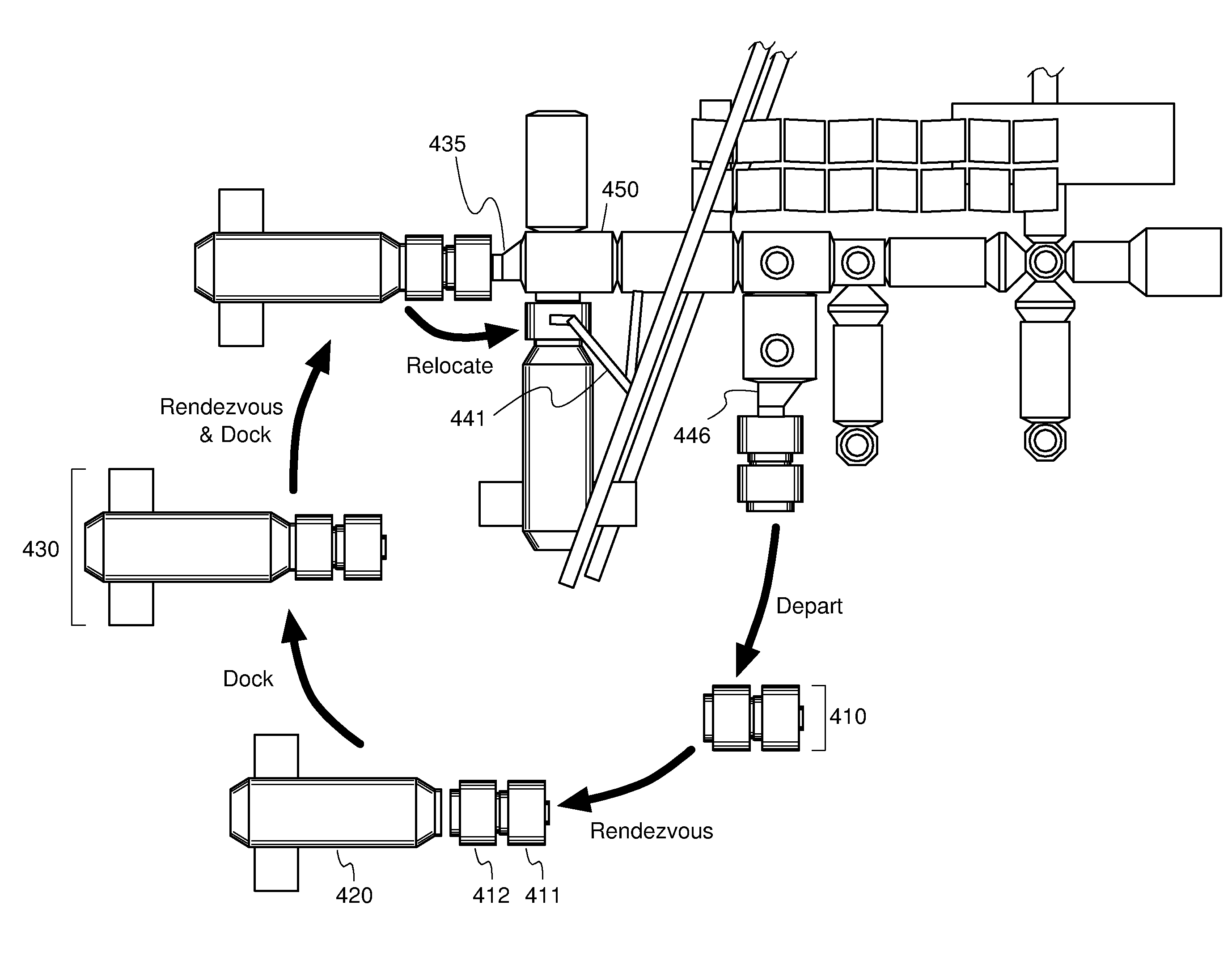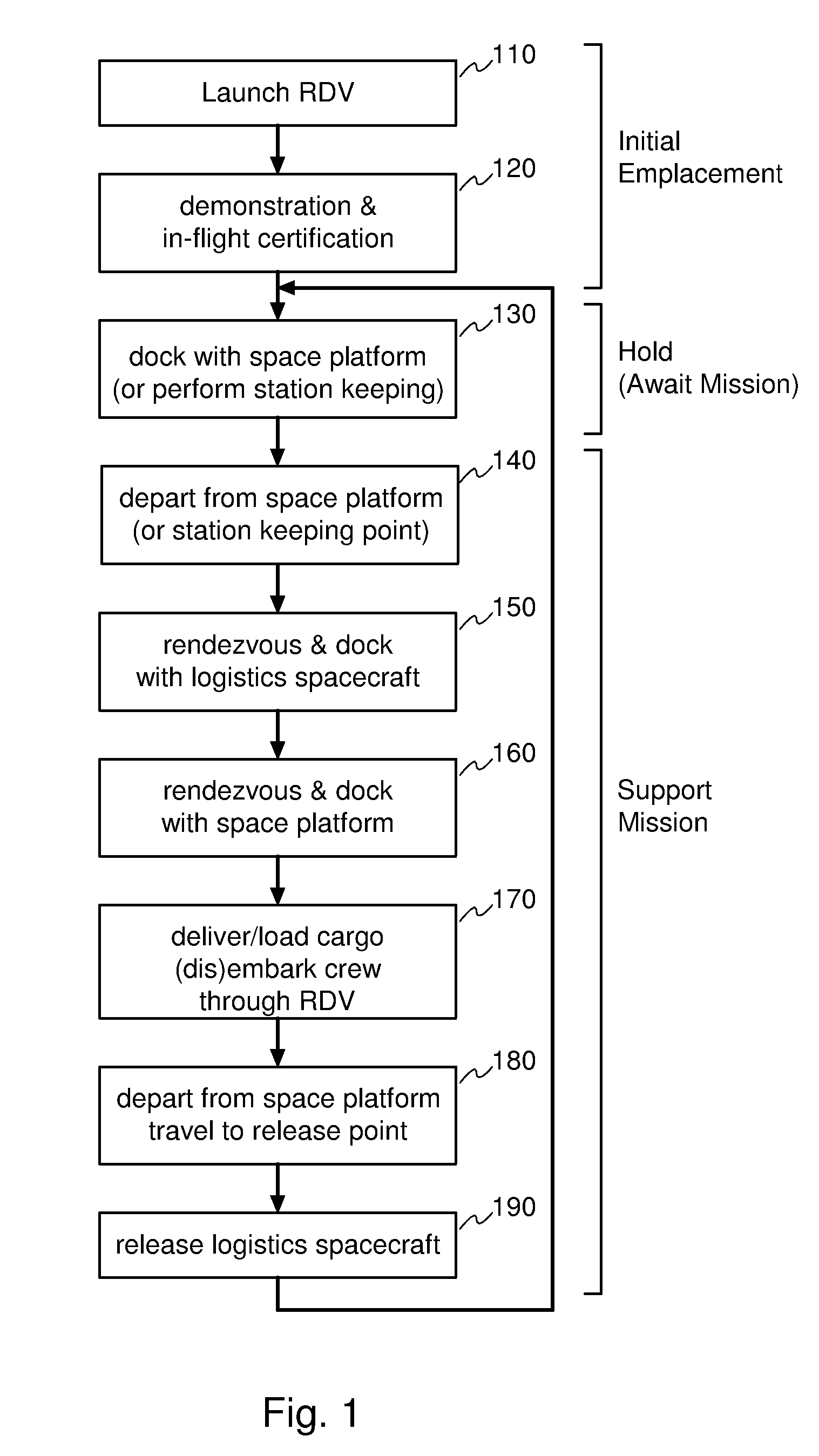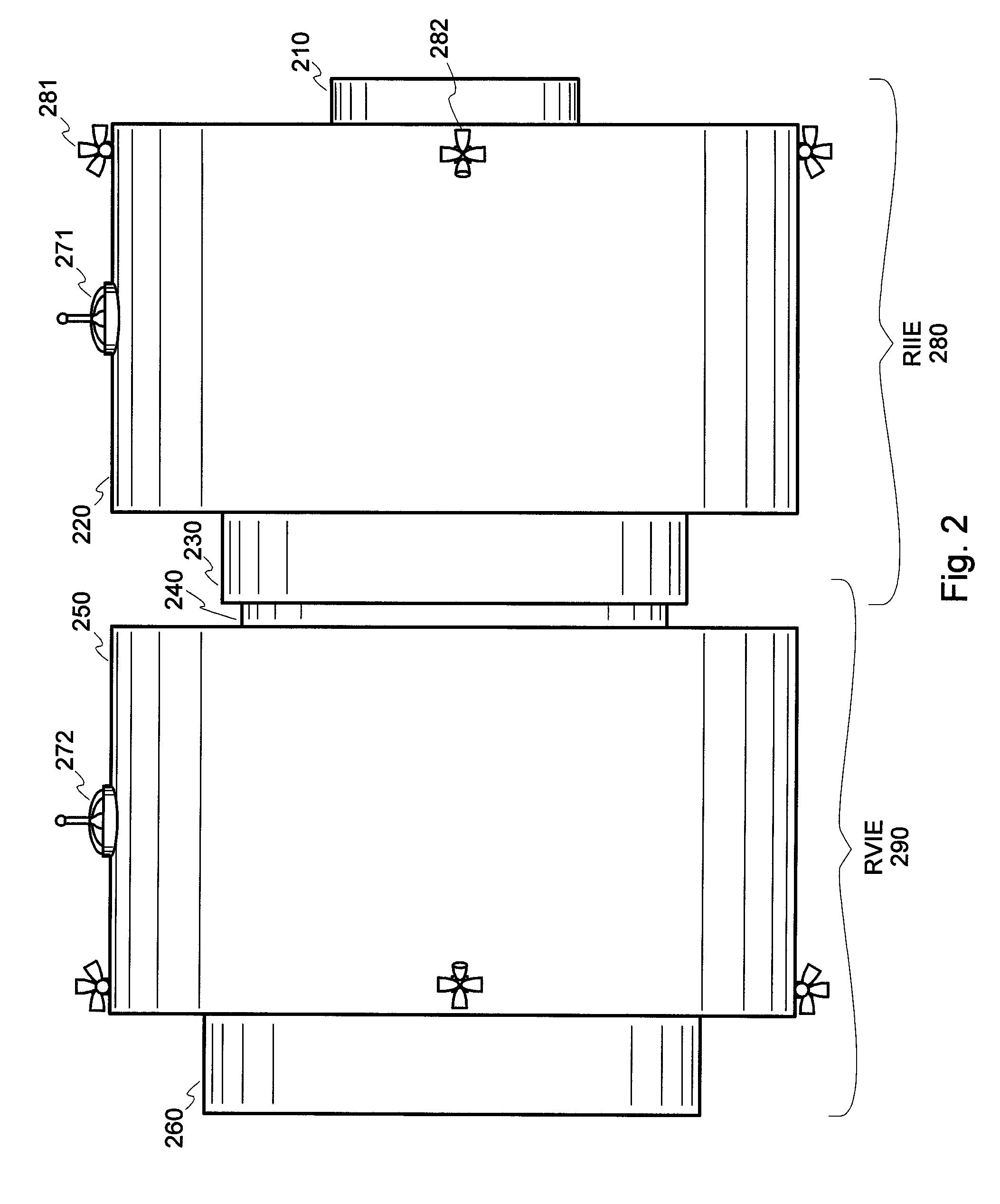Spacecraft interface module for enabling versatile space platform logistics support
a spacecraft and interface technology, applied in the direction of cosmonautic components, cosmonautic parts, cosmonautic vehicles, etc., can solve the problems of high labor intensity, high labor intensity, and high labor intensity of personnel
- Summary
- Abstract
- Description
- Claims
- Application Information
AI Technical Summary
Benefits of technology
Problems solved by technology
Method used
Image
Examples
Embodiment Construction
[0029]One or more embodiments of the invention are described below. It should be noted that these and any other embodiments described below are exemplary and are intended to be illustrative of the invention rather than limiting.
[0030]Broadly speaking, the invention relates to systems and methods to deliver crew, cargo and other logistics services to space platforms. More particularly, the invention relates to systems and methods for automated rendezvous and docking of a logistics spacecraft to a space platform.
[0031]Conventionally, a spacecraft providing logistics support to a space platform such as the ISS is equipped with all the systems necessary to perform far-field rendezvous, rendezvous, and proximity operations (including docking) with the platform. The logistics support spacecraft must also have systems needed to perform any departure and deorbit maneuvers. An alternative architecture which employs an intermediate interface spacecraft and which eliminates the need for many o...
PUM
 Login to View More
Login to View More Abstract
Description
Claims
Application Information
 Login to View More
Login to View More - R&D
- Intellectual Property
- Life Sciences
- Materials
- Tech Scout
- Unparalleled Data Quality
- Higher Quality Content
- 60% Fewer Hallucinations
Browse by: Latest US Patents, China's latest patents, Technical Efficacy Thesaurus, Application Domain, Technology Topic, Popular Technical Reports.
© 2025 PatSnap. All rights reserved.Legal|Privacy policy|Modern Slavery Act Transparency Statement|Sitemap|About US| Contact US: help@patsnap.com



